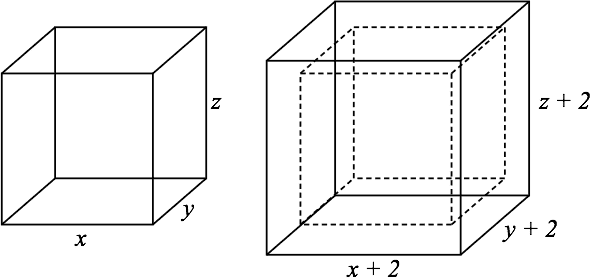Imagine a rectangular solid composed of small unit cubes. The rectangle measures cubes by cubes by cubes. Now imagine building a shell of unit cubes around the entire solid. In other words, the shell is 1 cube thick in all dimensions.
First: what is an equation for the number of unit cubes in the shell in terms of , , and ? Second: for what , , and is the number of cubes in the rectangular solid equal to the number of cubes in the shell?
Solution
The original solid has unit cubes. The new one (see the figure), cube plus shell, has
unit cubes. So the shell alone has cubes. That answers the first question.
As for the second: when does the shell alone equals the original cube in volume, this requires that we solve the equation:
in three variables, which is, , not easily solved and we're not going to try.
It would be an interesting exercise to program a spreadsheet and fool around with different dimensions to see if anything turns up. Also, try having the original solid be a cube itself, i.e. . Then
. . Programming a spreadsheet gives us x between 7 and 8, with no integer solution. But there is an explicit solution. Mathematica gives
